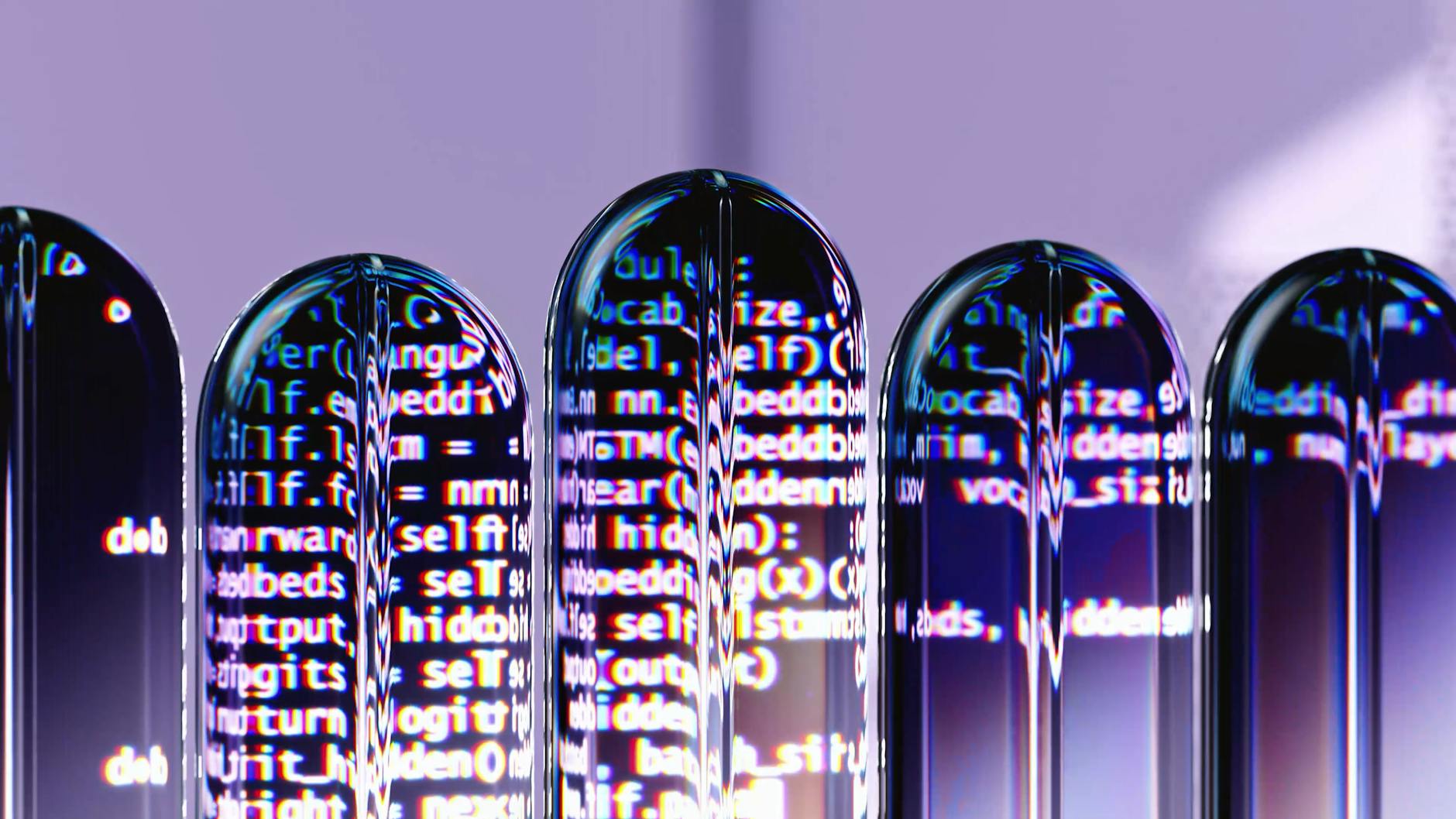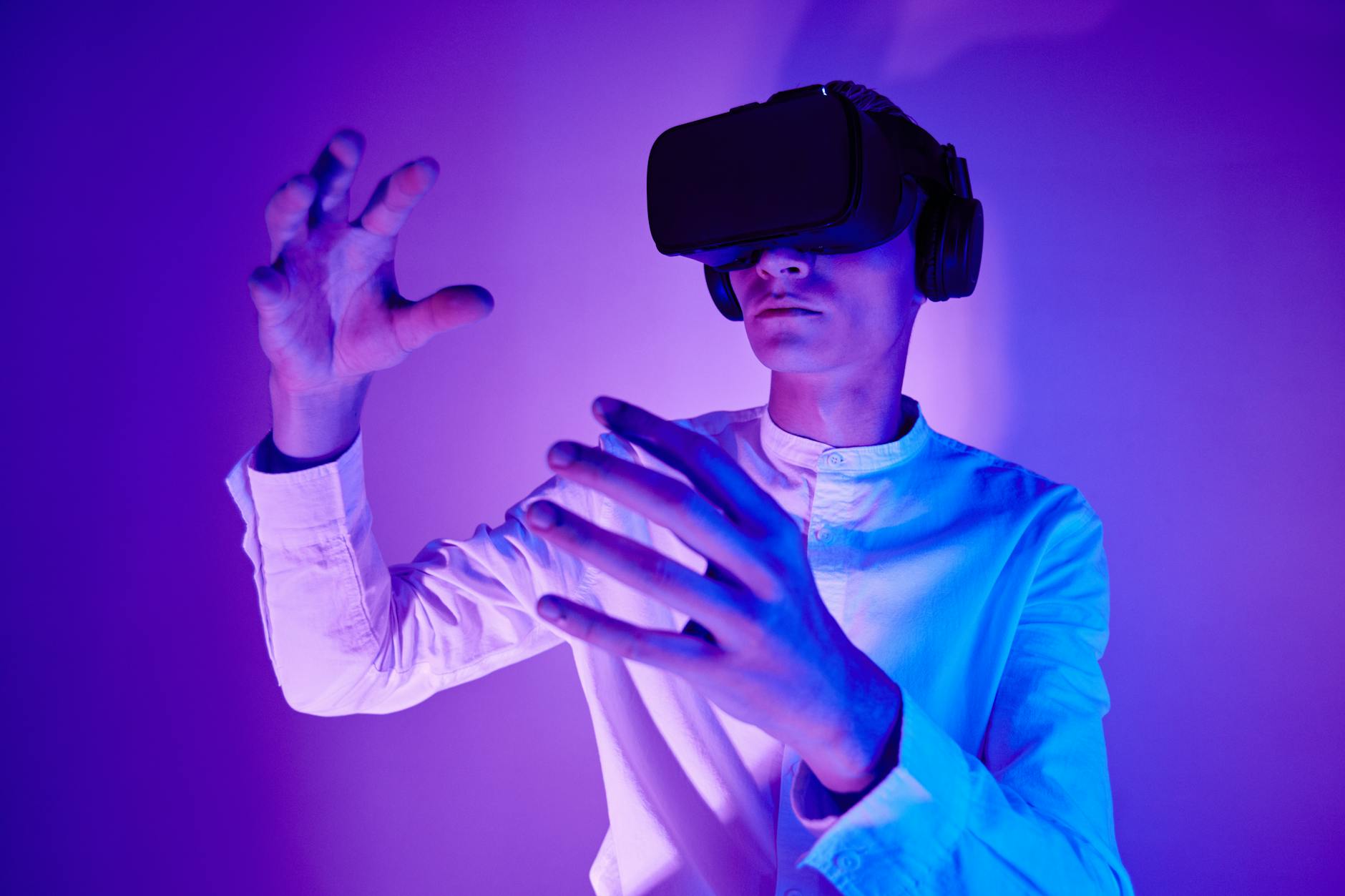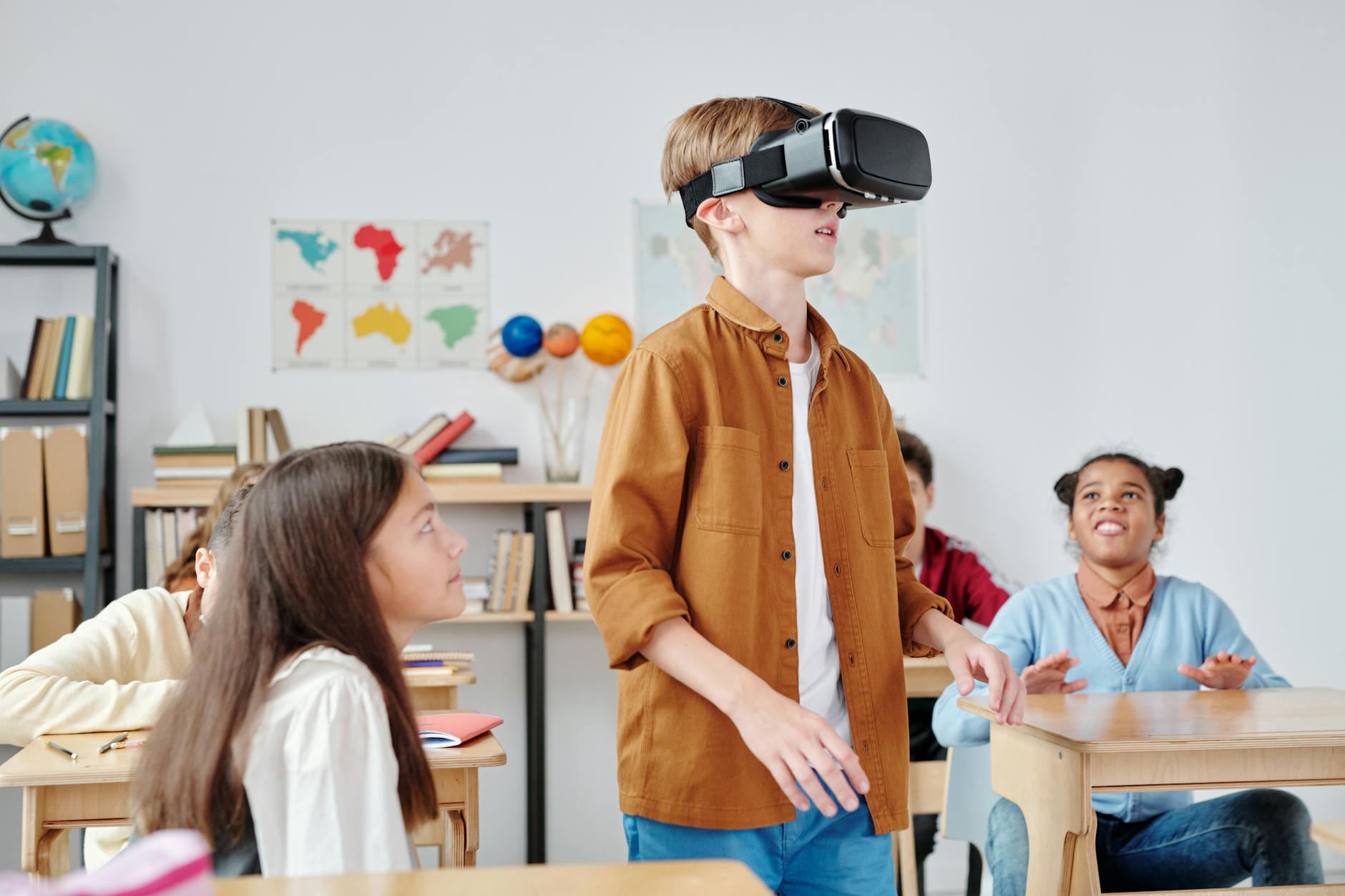What are the negative effects of technology? Think about it. As we approach 2024, it’s crucial to anticipate the negative impacts of technology that may dominate the technological landscape in the coming year. From ethical concerns surrounding AI algorithms to the rise of generative AI and its potential for deepfakes and misinformation, the tech industry is poised to face significant challenges. Stay informed and explore the upcoming technological issues with me in this insightful story.
The Dark Side of Technology in 2024: 10 Ways It’s Impacting Our Lives
Here’s a table highlighting the 10 negative impacts of technology, their specific impacts, and explanations of why they’re harmfu:
| # | Negative Impact | Impact Description | Why It’s Bad | Outcome |
|---|---|---|---|---|
| 1 | Privacy Invasion | Increased surveillance and data collection by companies and governments. | Undermines individual privacy and can lead to misuse of personal information. | 🕵️♂️ |
| 2 | Cybersecurity Threats | Increased risk of hacks, data breaches, and cyberattacks. | Overuse of technology is linked to anxiety, depression, and other mental health issues. | 🖥️💥 |
| 3 | Mental Health Issues | This leads to long-term psychological problems and affects life quality. | Technology leads to reduced face-to-face interactions. | 🧠💔 |
| 4 | Reduced Physical Activity | Sedentary lifestyle due to excessive use of devices. | Contributes to health issues like obesity, heart disease, and diabetes. | 🏃♂️➡️🛋️ |
| 5 | Social Isolation | Constant digital stimulation reduces attention spans. | Leads to loneliness and a lack of meaningful personal connections. | 👥❌ |
| 6 | Environmental Harm | E-waste, energy consumption, and pollution from tech manufacturing. | Contributes to climate change and environmental degradation. | 🌍🔥 |
| 7 | Job Displacement | Automation and AI replacing human jobs. | Leads to unemployment and economic instability for affected workers. | 🏭👋 |
| 8 | Shortened Attention Span | The rapid spread of fake news and misinformation online. | Affects learning, productivity, and cognitive development. | 🧠⏲️ |
| 9 | Disinformation Spread | Rapid spread of fake news and misinformation online. | Leads to social and political unrest and public health risks. | 📰❌ |
| 10 | Addiction | Compulsive use of social media, gaming, and other digital platforms. | Disrupts daily life, relationships, and mental well-being. | 📱💔 |
The Dilemma of AI and Ethics
Artificial Intelligence (AI) is revolutionizing industries with its ability to streamline processes and enhance productivity. However, as AI continues to permeate various aspects of our lives, ethical concerns have surfaced, prompting discussions about the implications of integrating AI into decision-making processes.
Bias in Algorithms and the Quest for Fairness
The widespread use of AI algorithms has raised concerns about bias in decision-making. AI systems rely on datasets to make predictions and recommendations, and if these datasets contain inherent biases, the AI’s outputs can perpetuate and amplify these biases. This creates a dilemma as it undermines the fairness and impartiality crucial for ethical decision-making.
To address this challenge, researchers and developers are actively refining algorithms to minimize bias and enhance fairness. By leveraging techniques such as algorithmic audits and diverse dataset curation, efforts are being made to ensure that AI-generated outcomes are devoid of discriminatory tendencies.
The Rise of Artificial Superintelligence Concerns
Beyond the immediate implications of biased algorithms, the concept of Artificial Superintelligence (ASI) has garnered attention, sparking apprehension about the potential consequences of creating an AI system that surpasses human cognitive abilities. The prospect of ASI introduces a new ethical dimension, prompting contemplation of the implications of ceding decision-making authority to entities that exceed human intelligence.
As AI technology progresses, engaging in ongoing dialogues about the ethical ramifications of advancing AI capabilities is vital. The pursuit of ethical AI involves not only refining technical aspects but also fostering a comprehensive understanding of the societal impact of AI systems. This necessitates collaborative efforts from various stakeholders to navigate the intricate intersection of AI and ethics.
 Photo by Google DeepMind
Photo by Google DeepMind
The Double-Edged Sword of Generative AI
In the world of technology, Generative AI has emerged as a double-edged sword, providing a platform for creative breakthroughs while simultaneously giving rise to originality issues. This technology, particularly OpenAI’s GPT-4, has shown astounding potential in enhancing creative product innovation, with performance improvements of up to 40% in tasks aligned with its current capabilities. However, it is crucial to recognize the inherent limitations, especially when utilizing Generative AI for solving business problems outside its scope, where performance may decline by 23%. The dynamic interplay between human creativity and Generative AI creates a complex landscape characterized by promise and peril.
Creative Breakthroughs vs. Originality Issues
While Generative AI has demonstrated the ability to elevate individual performance in creative endeavors, it presents a paradoxical challenge related to collective creativity. The technology’s proficiency in generating responses with similar meanings can inadvertently lead to a reducesity of ideas when used extensively. Participants leveraging Generative AI for creative product innovation exhibited a 41% lower diversity of ideas than those not utilizing the technology. This phenomenon emphasizes the delicate balance between leveraging AI for individual performance gains and preserving collective creativity.
Deepfakes and the Misinformation Avalanche
A prominent concern stemming from Generative AI is the proliferation of deepfakes, which are hyper-realistic manipulated media that pose significant risks in propagating misinformation. The advanced capabilities of Generative AI in creating fabricated content have exacerbated the challenge of combating misinformation, amplifying the potential for a misinformation avalanche. As the technology continues to evolve rapidly, the need for stringent safeguards against the misuse of Generative AI remains paramount to mitigate the adverse impacts on societal trust and truth dissemination.
 Photo by Google DeepMind
Photo by Google DeepMind
Cybersecurity Breaches and Personal Data Risks
In a world where technology reigns supreme, the risk of cybersecurity breaches and the compromise of personal data loom ominously, impacting individuals and organizations alike.
The Escalation of Hack Attacks
The relentless evolution of cyber threats presents a severe challenge in safeguarding personal data. Hackers with advanced technologies and cunning tactics continuously devise new ways to breach security measures. From sophisticated social engineering techniques to insidious ransomware and malware attacks, the arsenal of cyber adversaries is vast and relentless. The Check Point 2023 Mid-Year Security Report revealed an alarming 8% surge in global weekly cyber attacks, signaling these malicious endeavors’ increasing sophistication and frequency. This rapid escalation demands a proactive and robust response to fortify digital defenses and mitigate the potential fallout from such breaches.
Protecting Privacy in an Open Digital World
The open expanse of the digital realm has ushered in unparalleled connectivity and convenience. However, this openness also amplifies the vulnerability of personal data. Despite the surging cyber threats, many organizations remain underprepared, leaving critical data and credentials susceptible to infiltration. IBM’s Cost of Data Breach Report 2023 starkly highlights this unpreparedness, with 51% of organizations planning to ramp up security investments following a breach. The complacency toward cybersecurity exposes organizations to significant risks, inviting scrutiny from regulatory bodies and eroding consumer trust.
 Photo by cotton-bro studio
Photo by cotton-bro studio
Tech Addiction and Mental Health Decline
In the digital era, it’s no surprise that technology has become an indispensable part of our daily lives. Still, the downside of this unceasing reliance on gadgets and connectivity is the detrimental impact it can have on our mental well-being. Let’s explore the link between screen time and mental wellness, along with the influence of social media on our mental health.
The Link Between Screen Time and Wellness
Excessive screen time has been correlated with a range of mental health issues, including heightened levels of anxiety, depression, and stress. Continuous exposure to screens can lead to feelings of isolation, disrupted sleep patterns, and reduced real-world social interactions. Moreover, the passive nature of prolonged screen use can contribute to physical health concerns, compounding the overall decline in well-being. As I delve into the implications of technology addiction, it’s essential to recognize the importance of finding a balance between digital engagement and real-world experiences.
Social Media
Social media platforms, while designed to foster connection and communication, have inadvertently become breeding grounds for comparison, cyberbullying, and a pervasive sense of inadequacy. The curated and often idealized representations of life on social media can lead to a distorted perception of reality, exacerbating feelings of discontentment and inadequacy. The relentless pursuit of likes, comments, and virtual validation can hijack our self-worth, perpetuating a cycle of digital dependence and negative self-perception. As we immerse ourselves in the digital realm, it’s crucial to cultivate a critical awareness of the impact of social media on our mental and emotional well-being.
 Photo by cotton-bro studio
Photo by cotton-bro studio
As we navigate the complex landscape of technology, it’s imperative to acknowledge its profound influence on our mental health. By fostering a mindful approach to our digital consumption and actively seeking moments of disconnection, we can safeguard our well-being amidst the ceaseless tide of technological advancement.
Job Displacement Due to Automation
The rapid advancement of technology has led to a surge in unemployment as automation replaces human jobs across various industries. As artificial intelligence and robotics continue to evolve, the need for human labor diminishes, resulting in widespread job displacement.
The Surge in Unemployment
Automation has significantly impacted the labor force, leading to a surge in unemployment rates. Automated systems and intelligent machines have replaced traditional roles in manufacturing, customer service, and transportation. This displacement has left many skilled workers without viable job opportunities, contributing to economic instability and societal challenges.
 Photo by Michelangelo Buonarroti
Photo by Michelangelo Buonarroti
The Transition Challenge for Workforce
As automation continues to reshape industries, the workforce faces significant challenges in transitioning to new roles that align with technological advancements. Many individuals find themselves ill-equipped to adapt to the digital landscape, requiring retraining and upskilling to remain employable in the modern job market. This transition process poses substantial hurdles for workers, impacting their livelihoods and financial stability.
E-waste and Environmental Concerns
The electronic devices we use daily eventually reach the end of their lifecycle, generating significant e-waste. This electronic waste, often containing toxic substances such as mercury and lead, poses a severe risk to human and environmental health. It’s alarming to note that according to the UN, the average individual produces a substantial 7.6 kilograms of e-waste annually, contributing to a worldwide total of 57.4 million tons.
The Growing Piles of Tech Trash
 Photo by Pixabay
Photo by Pixabay
The inadequate collection, treatment, and recycling of e-waste compound the issue, accumulating hazardous electronic trash in landfills and surrounding areas. Improper disposal practices, such as open-air burning and using acid baths to extract valuable materials, release toxic substances into the environment, further exacerbate the problem.
Energy Consumption and Carbon Footprint of Digital Services
The production and usage of digital devices are also linked to high energy consumption and a substantial carbon footprint. As the demand for digital services grows, so does the energy required to power data centers and support electronic infrastructure. This surge in energy consumption contributes to environmental degradation and climate change, highlighting the far-reaching implications of our reliance on technology.
The impact of e-waste and the environmental concerns associated with digital services underscore the urgency of implementing sustainable practices and raising awareness about responsible electronic disposal and energy-efficient technologies.
Social Interaction and the Digital Divide
The advent of technology has undeniably transformed the dynamics of social interaction, bringing both benefits and drawbacks. One of the negative impacts is the dwindling practice of face-to-face communication. The immersive digital realm has led to a decline in engaging in meaningful conversations as individuals increasingly resort to impersonal digital exchanges over genuine in-person dialogues. The warmth, empathy, and non-verbal cues present in face-to-face interactions are often lost in technology, contributing to a decrease in the quality of interpersonal connections.
Lost Art of Face-to-Face Communication
The erosion of face-to-face communication is apparent in numerous settings, from interpersonal relationships to professional environments. As people rely more on digital platforms to convey their thoughts and feelings, the opportunity to develop essential social skills through face-to-face interaction diminishes. Consequently, this may lead to challenges in building and maintaining meaningful relationships, as the nuances and emotional depth present in direct conversations are often absent in digital exchanges.
The Widening Gap Between Tech Haves and Have-Nots
Moreover, the proliferation of technology has amplified the gap between those with access to and proficiency in digital tools and those without. This digital divide is a significant concern, exacerbating existing social and economic disparities. Individuals with limited access to technology and digital literacy are disadvantaged in various aspects of life, including education, employment opportunities, and civic engagement. As technology advances, the divide between the tech-savvy and the technologically marginalized widens, underscoring the pressing need for inclusive access to digital resources and education.

Educational Setbacks and Screen Learning
Integrating technology in education has led to positive and negative outcomes. A key concern is the prevalence of digital distractions within virtual classrooms, impacting students’ learning experiences. As students spend extended periods engaging with screens for educational purposes, the landscape has witnessed significant shifts.
Digital Distractions in Virtual Classrooms
The surge in screen time, particularly in virtual settings, has given rise to digital distractions that impede students’ focus and engagement. The allure of non-educational content, notifications, and multitasking opportunities can divert students’ attention from the learning tasks at hand.

The Question of Learning Effectiveness Online
The shift to online learning has prompted discussions regarding the effectiveness of this mode of education. Educators and parents are raising concerns about whether virtual classrooms offer the same level of interaction, collaboration, and knowledge retention as traditional in-person learning. This shift has also highlighted the need to reevaluate the methods and tools used in virtual classrooms to ensure optimal learning outcomes.
What are the adverse effects of technology?
Increased sedentary behavior and decreased physical activity.
Negative impact on mental health, such as increased stress and anxiety.
Social isolation and reduced face-to-face interaction.
Privacy concerns and potential for cyberbullying.
Dependence on technology leads to addiction and distraction
Why could these future technologies have a negative impact?
Future technologies, while holding the promise of advancing human capabilities and solving many current problems, also have the potential to create new challenges or exacerbate existing issues.


Pingback:10 Negative Impacts of Technology in 2024 – Lorelei Web